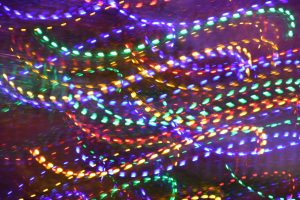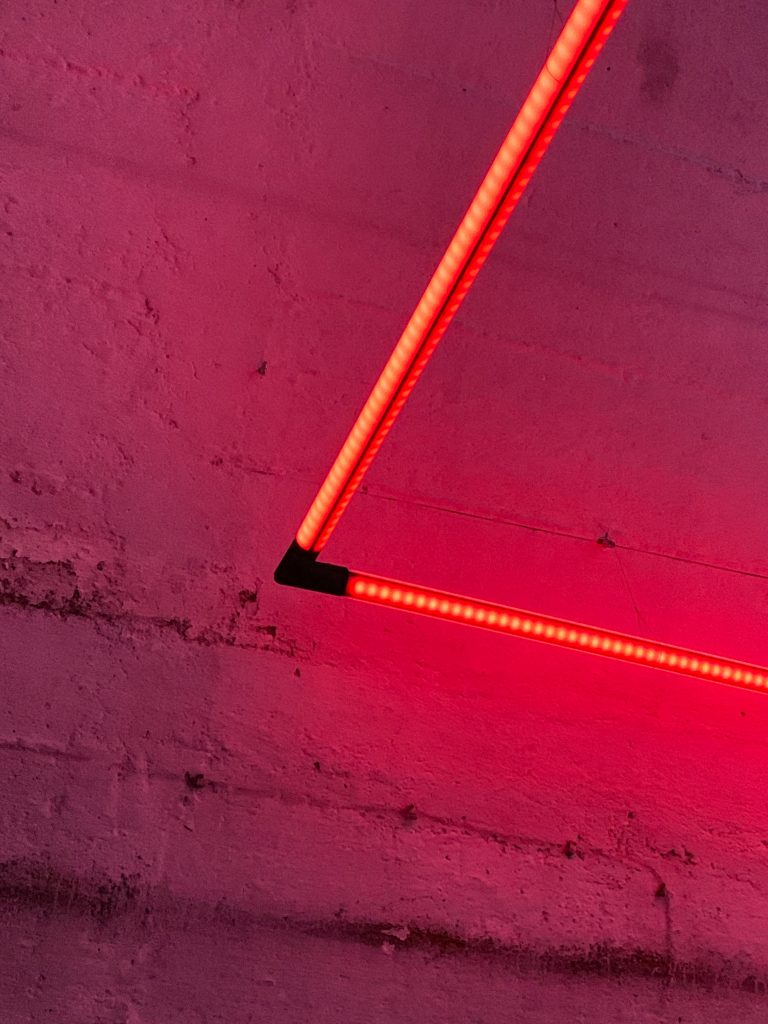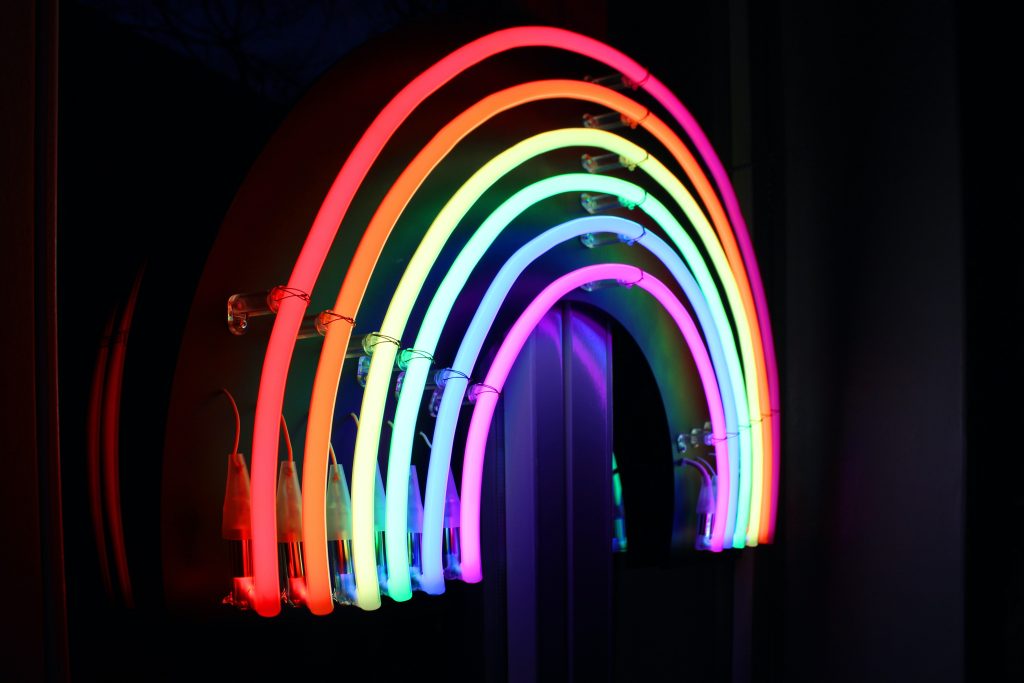What Is A LED Strip?
1. Brief introduction
LED light strip refers to the assembly of LEDs on a strip-shaped flexible circuit board or PCB hard board, which is named after the shape of the product is like a strip. Its luminous color is changeable, and the brightness and color of the light can be changed by adjusting; in daily home life, the light strip is often used as an ambient light to set off the overall home atmosphere! Because of its long service life (normally 80,000 to 100,000 hours), and very energy-saving and environmentally friendly, it has gradually emerged in various decoration industries.
The name of this light strip also includes many old-fashioned light strips that used wires to connect LEDs directly without FPC or PCB.
The working principle of the LED light strip is that each segment is a unit, and each unit has a fixed number of light-emitting diodes and distributed current limiting resistors. When cutting, it must be cut off by unit, otherwise this segment will not light up. Each unit is connected in parallel to withstand the power supply voltage, such as DC 200V, 24V, 12V, 5V, etc. The power supply and the light strip are connected with positive and negative poles. Lights up when reversed.

2. Classification of LED strips
LED light strips are generally divided into flexible LED light strips and LED hard light strips, but generally also include old-fashioned LED light strips connected to circuit boards with wires, such as flat three-wire 4.3W/m, flat four-wire 6.48W/m, Flat five-wire 8.64W/meter light strip, etc.
2.1. Flexible LED strip
The flexible LED light strip uses FPC as the assembly circuit board and SMD LED for assembly, so that the thickness of the product is only 0.1CM thick and does not take up space; the general specifications are 30cm long 18 LEDs, 24 LEDs and 50cm long 15 LEDs, 24 LEDs, 30 LEDs, etc. There are also 60cm, 80cm, etc., different users have different specifications. And it can be cut at will, and can also be extended at will without affecting the light. The FPC material is soft and can be bent, folded, and rolled at will, and can be moved and stretched freely in three-dimensional space without breaking. It is suitable for use in irregular places and places with small space, and because it can be bent and rolled arbitrarily, it is suitable for any combination of various patterns in advertising decoration.
COB light source is a high-power integrated surface light source. It is a high-efficiency integrated surface light source technology that directly attaches LED chips to a mirror metal substrate with high reflectivity. It has the advantages of high color rendering, uniform light emission, no light spots, health and environmental protection.
If you want to have a more flexible lighting effect, consider choosing a running water light strip. After this product is powered on, the light will light up like flowing water, and it will continuously present a smart and flowing light effect. It can be said that the light and shadow give the home a unique vitality. Under the layout of the personalized lighting scheme, the use of running water light strips for multi-model splicing allows users to easily enjoy an unimaginable high-end home atmosphere.
Silicone flexible light strips are not limited to the form of linear light. If you want to create more diverse lighting shapes, such as curves, circles, ellipses, etc., you can rely on silicone flexible light strips to achieve. The product is made of high-flexibility silicone material, which has outstanding performance in flexibility. It can be arbitrarily bent into various radian shapes, and is perfectly shaped with the help of clips and buckles. It is suitable for various household items. Light line shape design.

2.2. LED light bar
LED strips are assembled with PCB hard boards. LEDs are assembled with SMD LEDs, and they can also be assembled with in-line LEDs. Different components are used depending on the needs. The advantage of the hard light bar is that it is easier to fix, and it is more convenient to process and install; the disadvantage is that it cannot be bent at will, and it is not suitable for irregular places. There are 18 LEDs, 24 LEDs, 30 LEDs, 36 LEDs, 40 LEDs and many other specifications for SMD LEDs for hard light bars; 18 LEDs, 24 LEDs, 36 LEDs, 48 LEDs are used for in-line LEDs. And other different specifications, there are front and side, the side light is also called the Great Wall light bar.
The monochromatic light strip is safer to prevent electric shock, and there is no need to worry about the risk of electric leakage if you directly touch it manually. In order to cope with more complex sizes and personalized needs, the product can be freely cut, flexibly installed, and has a variety of light colors to choose from, which greatly meets the actual needs of different families. After installation, the monochromatic light strip has the advantages of delicate light, comfortable and natural, and no video flash, which can add to the warm and comfortable atmosphere of the home.

3. Features of LED strips
3.1. Advantages
LED lights have many advantages:
(1) Soft and can be curled arbitrarily.
(2) It can be cut and extended.
(3) The light bulb and channel are completely covered in flexible plastic, with good insulation and waterproof performance, and use insurance.
(4) Strong weather resistance.
(5) It is not easy to break and has a long service life.
(6) It is easy to create graphics, text and other shapes; it has been widely used in buildings, bridges, pathways, gardens, courtyards, strata, ceilings, furniture, buses, lakes, underwater, posters, pink cards, signs, etc. and illuminated.
3.2. Common problem
Because the LED light strip is a series-parallel structure, when a short circuit occurs in a certain group of circuits, the voltage of other LEDs in the same group will increase, the brightness of the LEDs will increase, and the corresponding heat generation will also increase. .
The most obvious is that in the 5050 light strip, when any chip circuit of the 5050 light strip is short-circuited, the current of the short-circuited lamp bead will double, that is, 20mA becomes 40mA, and the brightness of the lamp bead will be doubled. It will become very bright, but at the same time, the heat will increase sharply, and it will burn the circuit board in a few minutes.
However, because this problem is relatively obscure, it is generally not paid attention to, because the short circuit does not affect the normal lighting of the light strip. If the staff in charge of the test only pays attention to whether the LED is emitting light, but does not check the abnormal brightness, or does not do Visual inspection, if only electrical test is done, this problem is often ignored, which is why many LED light strip manufacturers always encounter customer complaints that the product is hot but can’t find the reason.
There are 2 common solutions to the above problems:
(1) Circuit design: The circuit should be as wide as possible, the spacing between the circuits should be 0.5mm, and the rest of the space should be fully filled. The thickness of the copper foil should be thickened as much as possible without violating the customer’s requirements for the total thickness of the circuit board, and the general thickness is 1~1.5 OZ.
(2) Production process: When printing solder paste, try not to allow tin connection between the pads to avoid soldering short circuits caused by poor printing. Avoid short circuits when patching. Check the placement of the die before reflow. After reflow, do a visual inspection first to ensure that the light strip is not short-circuited, and then do an electrical test review. During the review, pay attention to whether the LED is abnormally bright or abnormally dark after lighting.
4. Application of LED strips
LED strips have been widely used in furniture, automobiles, advertising, lighting, ships, bars and other industries. There are many uses of LED light strips, the most common of which is used as LED decorative lights, such as car bottom decoration, hotel KTV bar decoration, home decoration and so on.
Having a wealth of installation shapes and application forms is the outstanding advantage of light strips, such as installing on the ceiling to visually increase the height of the floor; for example, inlaid on the wall to create a high-end style; or hidden in the wardrobe to illuminate the dark space ; Or hide at the head of the bed to create a comfortable atmosphere…
Colored light strips can be used in places with high decorative brightness requirements or places with strong dynamic effects. Large second-line LED light strips are the most common linear decorative lights, with a diameter of 13MM, which are widely used to outline various buildings. Outlines, construction of large-scale lighting patterns, various indoor and outdoor decoration, community landscaping, business and travel facade decoration, advertising signs, disco dance halls, stage, film and television background production, etc. The matching controller can produce effects such as flickering and dimming. SMD light strips are especially suitable for the lighting of dark groove lighting, building outline lighting, bar counters, display cabinets and other environments, and can also be used to make high-brightness art lights.
5. Installation and use of LED strips
5.1. Installation
(1) Indoor installation
When the LED light strip is used for interior decoration, it is very simple to install because it does not have to withstand the wind and rain. Take the LED light strips produced by Guanghong Electronics as an example. The back of each LED light strip is affixed with self-adhesive 3M double-sided adhesive tape. The installation place, just press it flat by hand. As for some places that need a corner or are long, it is very simple. The LED light strip is a circuit structure composed of 3 LEDs in series and parallel. Every 3 LEDs can be cut off and used alone.
(2) Outdoor installation
Outdoor installation is subject to wind and rain. If 3M glue is used for fixing, the adhesiveness of 3M will be reduced over time and the LED light strip will fall off. Therefore, outdoor installation is often fixed with card slots. Where it needs to be cut and connected, the method is the same as the indoor installation, except that it needs to be additionally equipped with waterproof glue to consolidate the waterproof effect of the connection point.
(3) Power connection method
The general voltage of the LED light strip is DC 12V, so it needs to use a switching power supply to supply power. The size of the power supply is determined according to the power and connection length of the LED light strip. If you don’t want each LED strip to be controlled by a power supply, you can buy a switching power supply with a relatively high power as the total power supply, and then connect all the LED strip input power supplies in parallel (if the wire size is not enough, it can be extended). Unified by the main switching power supply. The advantage of this is that it can be controlled centrally, but the inconvenience is that the lighting effect and switch control of a single LED strip cannot be achieved. The specific method can be measured by yourself.
(4) Controller connection method
The LED marquee strip and RGB full-color strip need to use a controller to achieve the changing effect, and the control distance of each controller is different. Generally speaking, the control distance of the simple controller is 10 to 15 meters, and the The control distance is 15 to 20 meters, and the longest distance can be controlled to 30 meters. If the LED strip is connected over a long distance and the controller cannot control that long strip, then a power amplifier is required to tap.
5.2. Use
(1) Check whether the lampshade, light bar, and various parts and accessories are complete.
(2) According to the length of the counter, the lampshade is processed to cut the matching length, and the two ends are processed with 45° chamfering.
(3) Through holes with a diameter of 3.5mm are opened on the inner sides of the left and right ends of the counter lampshade, so as to connect with the fixed pad.
(4) Open two M3 holes in the lower part of the left and right ends of the lamp trough to connect with the triangular block.
(5) Put the lampshade to be installed into the light bar of suitable size, and connect them together through the triangular block.
(6) Glue the fixing block to the inner side of the glass corresponding to the left and right lampshade openings with shadowless glue.
(7) Fix the connected lampshade on the counter with screws.
(8) Install the wire rod.
(9) Install the driver. Pay attention to the input and output ports when installing, and pay attention to the positive and negative connections when connecting the light bar. The red wire is the positive wire, and the black wire is the negative wire.





